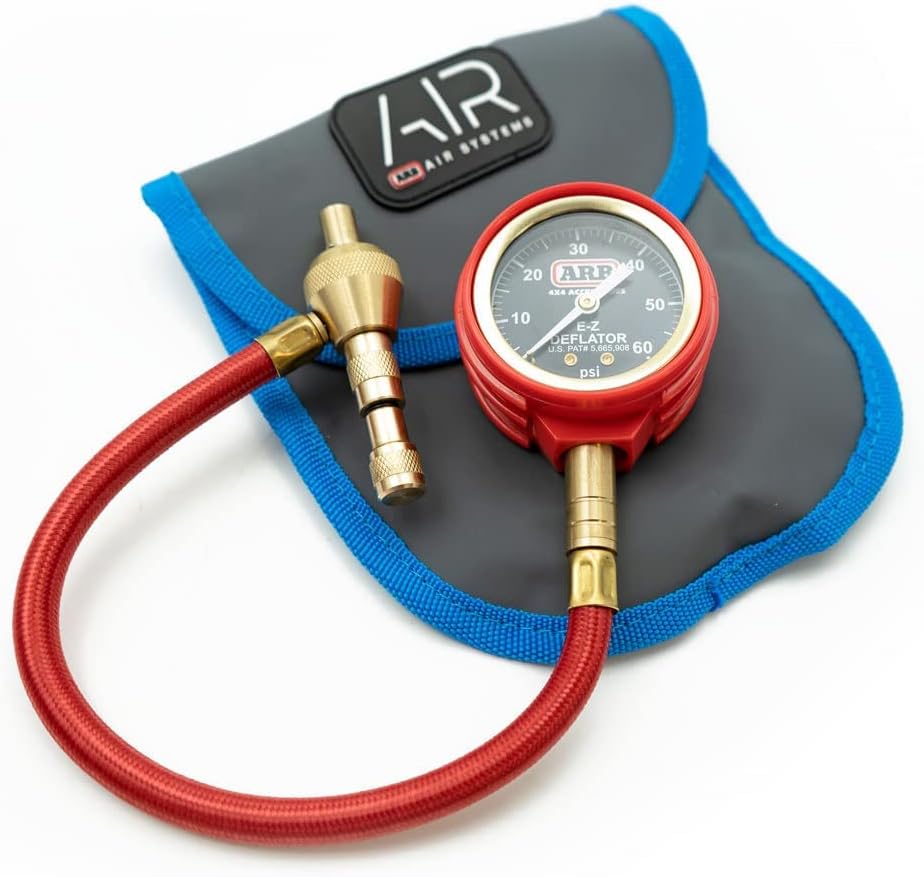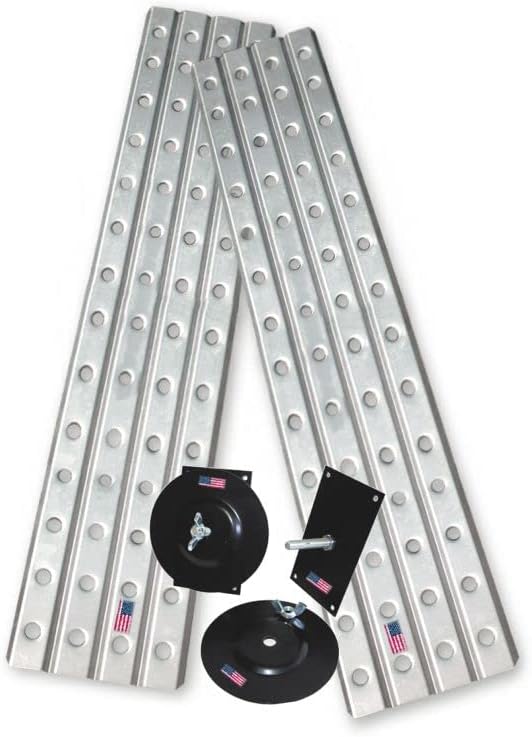From Beaches to Deserts: How to Adjust Your Sand Driving Style
From Beaches to Deserts: How to Adjust Your Sand Driving Style
🔹Part 1: Sand Driving Basics 🔹Part 2: Getting Unstuck:
🔹Part 3: Beaches & Deserts:
Sand driving is an art form, a dance between momentum and terrain. While both beach sand and inland dunes demand smooth inputs and precise tire pressure, they are far from identical challenges. Each environment presents its unique set of variables and demands subtle, yet critical, adjustments to your technique, vehicle setup, and gear strategy. This guide will help you master the nuances, allowing you to float effortlessly over wet beaches and crest towering dry desert dunes with confidence and without drama.
Beach vs. Desert: Understanding the Fundamental Differences
Before you even hit the sand, it's crucial to understand why these environments require different approaches. It's more than just a change of scenery:
- Surface Composition & Moisture:
- Wet Beaches: Often appear firmer due to moisture saturation from tides. This creates a denser, more predictable surface, but it also hides insidious traps like tide-scoured potholes, soft washouts near creek mouths, and sudden transitions to deeper, softer sand just above the high-tide line.
- Hot Desert Dunes: Typically consist of much finer, dryer, and less compacted sand. This makes them incredibly soft and constantly shape-shifting with the wind. Traction is significantly harder to find, and vehicles tend to dig in much faster.
- PSI Targets & Floatation: Generally, you'll need significantly more deflation for dry, soft desert dunes compared to the relatively firmer conditions of a wet beach. The goal is maximum floatation in the desert, while on the beach, you're balancing grip with reduced rolling resistance.
- Momentum & Line Choice:
- Beaches: Often allow for longer, sweeping lines where consistent momentum can carry you for miles. The terrain is usually flatter, encouraging a relaxed, flowing driving style.
- Dunes: Demand a much more dynamic approach. You'll need deliberate run-ups to climb, gentle but precise cresting techniques to avoid nose-diving, and careful, controlled descents. Momentum is still critical, but it's applied in shorter, more intense bursts.
- Environmental Hazards:
- Beaches: Tides, saltwater corrosion, driftwood, hidden rocks, and soft creek crossings.
- Deserts: Extreme heat, fine dust, sudden sharp drop-offs (especially on the lee side of dunes), hidden rocks or stumps under the sand, and the isolation that demands self-sufficiency.
Recommended Tire Pressures: Your Foundation for Sand Success
Tire pressure is your most powerful tool in sand driving. These are starting points; always adjust based on conditions and how your vehicle performs.
- Firm/Wet Beach: 18–22 PSI. This provides a good balance of flotation and control on generally harder-packed wet sand, while still reducing the risk of bogging down.
- Soft Beach / Small Dunes: 15–18 PSI. When the sand gets deeper or looser, or if you're transitioning to small, less aggressive dunes, a further drop will increase your contact patch.
- Large, Dry Dunes: 12–15 PSI. This is where significant deflation becomes critical. The goal is maximum floatation. In extreme, very soft conditions, you might temporarily go as low as 8–10 PSI to get moving, but reinflate as soon as you are on slightly firmer ground to avoid bead separation or tire damage, especially if turning.
Crucial Tip: If your rig begins to dig in or lose momentum, the absolute best first response is to stop immediately, drop your PSI by another 2–3 PSI, use your shovel to clear a small ramp, and then attempt to drive off gently in a higher gear. Don't spin your wheels!
Line Choice & Throttle Application: The Art of Floating
The Beach Playbook: Long, Sweeping, and Mindful
- Find the Firmest Line: On beaches, your best bet is usually to drive near the firmest band of sand, typically below the high-tide line where the sand is still wet but not saturated. Avoid the very soft, dry sand higher up the beach unless absolutely necessary.
- Beware of Water Hazards: Stay clear of wet sinkholes, soft tidal zones, and especially river or creek mouths, which can hide deep, unstable sand or rapidly changing water levels.
- Smooth Inputs: Use smooth, consistent throttle in 4-High, often in a taller gear (like 2nd or 3rd) to prevent excessive wheel spin. Think of it like gliding over the surface.
- Maintain Momentum: The flat nature of beaches makes consistent momentum your friend. Avoid sudden stops or sharp turns that can cause the tires to dig in.
The Desert Dune Playbook: Dynamic, Deliberate, and Decisive
- Scout Your Line: For dune climbing, always scout your line. Identify the lee side (downwind side), which is typically softer and steeper. The windward side is usually firmer and more gradual. Build speed on the flat approach.
- Climb Straight: Approach a dune climb straight on, building appropriate speed early. Maintain a steady throttle and a consistent trajectory. Avoid sudden steering inputs or chopping the throttle mid-climb, which can cause loss of momentum or even a rollover.
- Feather the Crest: As you approach the crest, ease off the throttle gently just before you reach the very top. This allows the nose of your vehicle to settle down, preventing a dangerous "blind crest" where you don't know what's on the other side.
- Pause and Assess: Once you've crested, if safe, pause for a moment to assess the descent. Look for obstacles, other vehicles, or unexpected drop-offs.
- Descend Straight with Engine Braking: Descend dunes straight down, keeping your wheels pointed in the direction of travel. Engage a low gear (1st or 2nd) and let engine braking control your speed. Avoid heavy braking, which can cause the front wheels to dig in and potentially lead to a rollover. If you feel the vehicle sliding sideways, a gentle application of throttle can sometimes straighten it out.
Braking, Turning, and Stopping: Precision in Soft Terrain
- Turning: Always execute wider arcs and gentler turns in sand, especially at low tire pressures. Tight turns cause the tires to "plow" or dig in, increasing rolling resistance and the risk of bogging down or even rolling a tire off the bead.
- Braking: Modulate your braking. Avoid stabbing the brakes suddenly, which can cause the tires to lock up and dig trenches. On descents, let engine compression do the bulk of the work. If you must brake, apply gentle, progressive pressure.
- Stopping: Whenever possible, park your vehicle on flat ground or facing slightly downhill. This makes it easier to get moving again. In windy desert conditions, try to nose your vehicle into the wind to minimize sand blasting your radiator and other exposed components.
Proven Gear for Both Environments: Your Essential Toolkit
While techniques adapt, core recovery gear remains invaluable across all sand environments. Invest in quality, and know how to use it.








Final Playbook for Each Environment
Beach Playbook: Embrace the Tide, Respect the Coast
- Tide Awareness is Paramount: Always check tide charts and understand the tidal movements. Plan your entry and exit routes carefully, ensuring you have ample time before the high tide encroaches. Never get cut off by an incoming tide.
- Respect the Environment: Stay off vegetated dunes – they're fragile ecosystems that protect the beach from erosion. Obey all signs regarding nesting areas for birds or marine life. Drive only on designated tracks.
- Maintain Flow: Utilize long, flowing lines with consistent momentum. Avoid aggressive steering and braking which can quickly dig you in. Focus on smooth inputs to keep your vehicle "floating" over the surface.
- Watch for Water Crossings: If crossing small creeks or braids to the ocean, scout the entry and exit. Be aware that the bottom can be very soft or have hidden obstacles. Always drive slowly through water.
Desert Dune Playbook: Conquer the Shifting Sands
- Read the Dunes: Always scout the lee (downwind) side of a dune; it will be steeper and softer with a sharper drop-off. The windward (upwind) side is typically more gradual and firmer. Plan your ascent and descent accordingly.
- Calculated Climbs: Build speed early and climb straight up the dune, maintaining a steady throttle. A taller gear (like 2nd or 3rd) helps prevent excessive wheel spin. Consistency is key.
- Gentle Cresting: As you near the crest, gently feather off the throttle. This allows your vehicle's nose to settle, giving you a crucial moment to see what lies beyond the peak before committing to the descent. Avoid "flying" over the crest.
- Controlled Descents: Descend dunes straight down, allowing engine braking in a low gear to control your speed. Avoid using the brakes heavily, as this can cause the front wheels to dig and potentially lead to a dangerous roll.
- Convoy Etiquette & Safety: When driving in convoys, always leave ample space between vehicles. Spot for each other on difficult climbs or descents. When recovering, ensure at least one vehicle remains on firm ground and communicate clearly via radios or hand signals.
The Bottom Line: Adaptability is Your Greatest Asset
While beach driving often rewards precise timing and tide awareness, desert dunes demand unwavering PSI discipline and masterful momentum management. The true sand driving expert is adaptable, understanding that each environment, and even different sections within the same environment, might call for slightly different tactics. Master both, equip yourself wisely, and you'll transform soft sand from a daunting obstacle into your most exhilarating and rewarding off-road terrain.
🔹Part 1: Sand Driving Basics 🔹Part 2: Getting Unstuck:
🔹Part 3: Beaches & Deserts:
Some links are affiliate links that help fund hands-on testing at no extra cost to you.
.jpg)


Comments